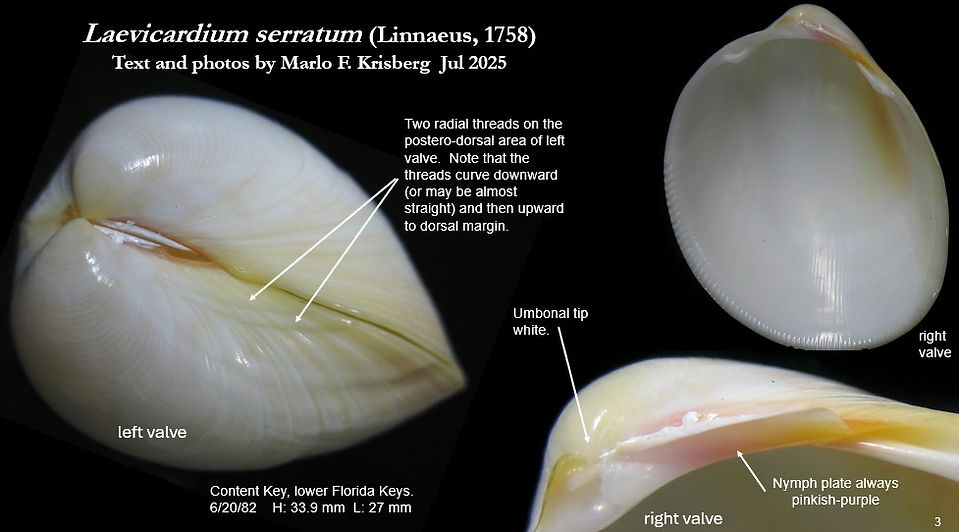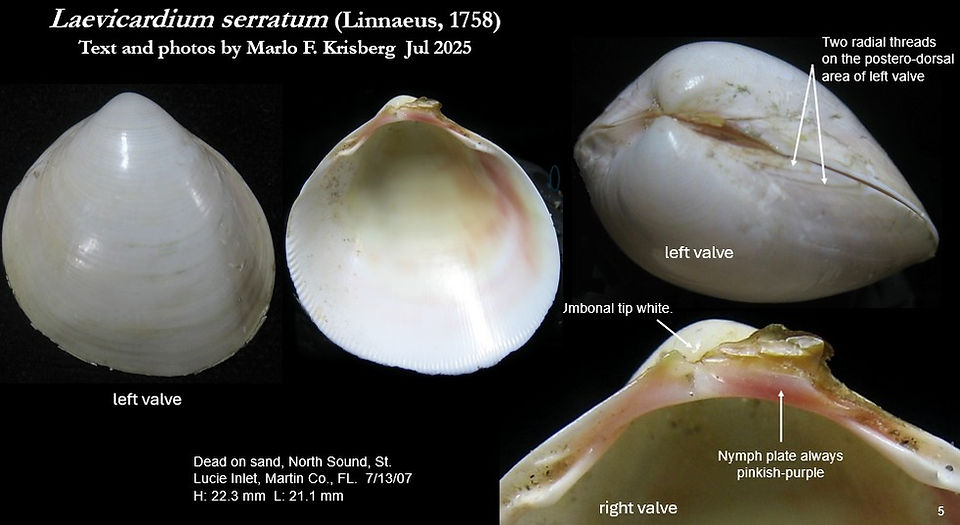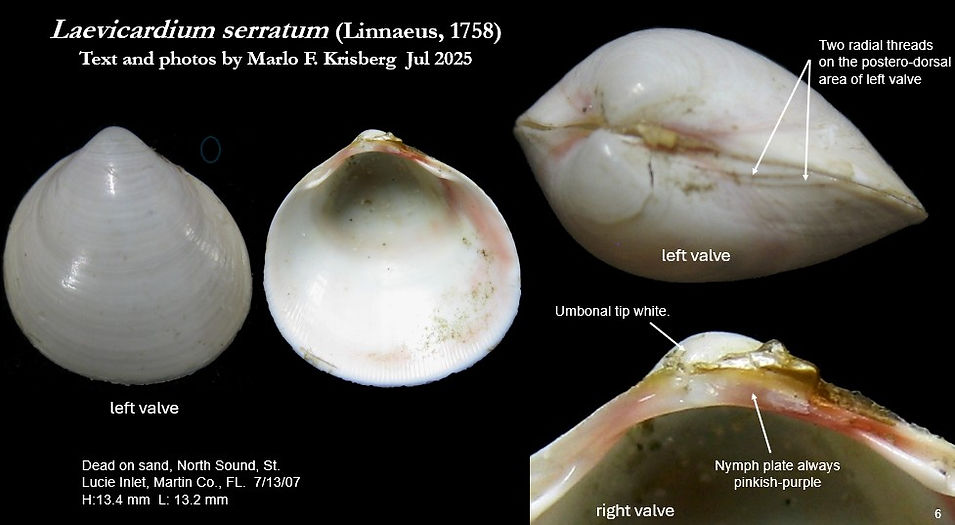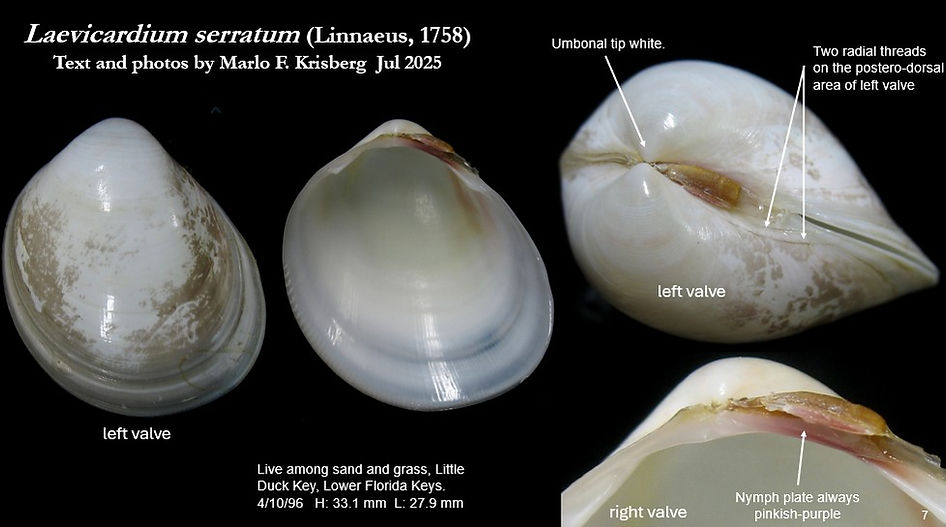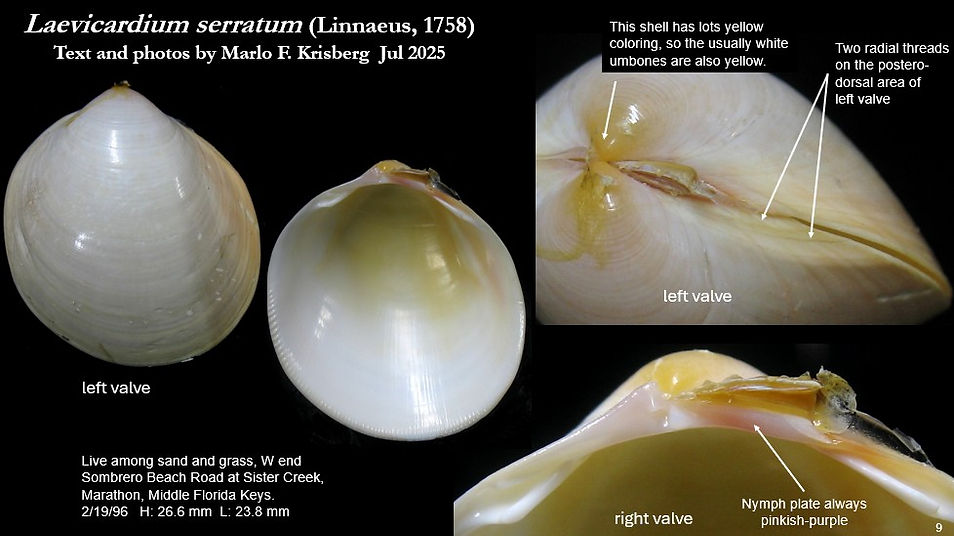
Posted: Sep 22 2007; Completely revised 7/31/25
Laevicardium serratum (Linnaeus, 1758), Common Egg Cockle
I’m presenting Laevicardium serratum and Laevicardium angmagsalikense in separate presentations with a lot of overlap since so much of the understanding of each is based upon a comparison between the two and awareness of the latter in Florida waters is only one year old, with none of the books we often rely upon published before 2024 having considered Laevicardium angmagsalikense (I still can’t pronounce it).
Much of the information presented is from:
Poorten, Jan. J. ter. (2024). A taxonomic iconography of living Cardiidae. Harxheim: ConchBooks.
Special appreciation to J.J. ter Poorten for providing documentation, answering all my questions, and providing a critical review of many of my working slides.
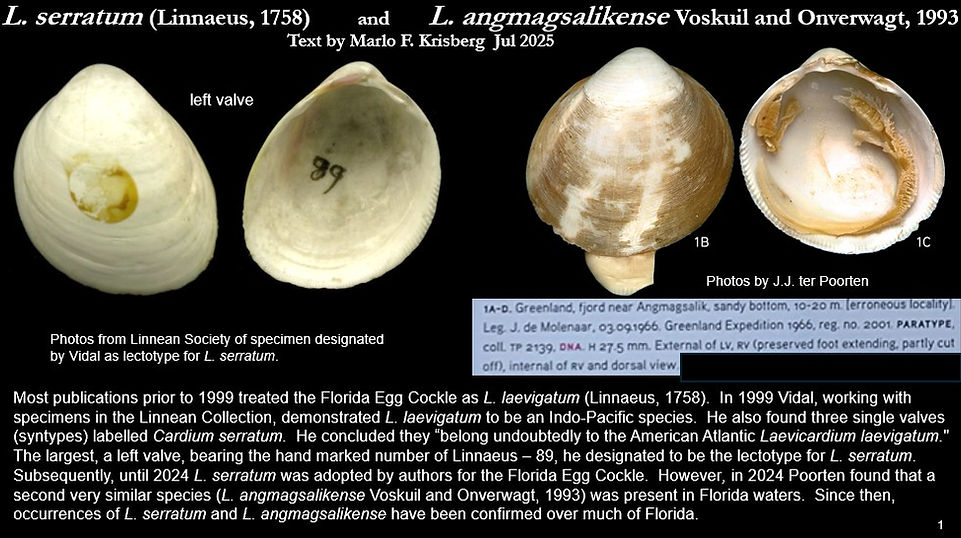
References:
Poorten, J.J. ter. (2024). A taxonomic iconography of living Cardiidae. Harxheim: ConchBooks.
Simone, L. R. L., P.M. Mikkelsen, and R. Bieler. 2015. Comparative anatomy of selected marine bivalves from the Florida Keys, with notes on Brazilian congeners (Mollusca: Bival via). Malacologia 58 (1/2): 1–127.
v.57-58 (2014-2015) - Malacologia - Biodiversity Heritage Library
Vidal, J. 1999. Taxonomic review of the elongated cockles: genera Trachycardium, Vasticacrdium and Acrosterigma (Mollusca: Cardiidae), Zoosystema, 21: pg. 327.
https://www.biodiversitylibrary.org/page/56151926#page/131/mode/1up
Voskuil, R. P. A.; Onverwagt, W. J. H. (1993). Studies in Cardiidae. 6. Two new species from the central Indo-Pacific and southeast Greenland and new names for two primary homonyms (Mollusca, Bivalvia). Gloria Maris. 31 (3): 33-44.
Note: In personal communications I requested Jan Johan ter Poorten to review the Laevicardium illustrated in the following. He confirmed that in both cases the illustrations were indeed of L. serratum.
Mikkelsen, P. M. and Bieler, R. 2008. Seashells of Southern Florida – Bivalves; pg. 288.
Jaxshells L. serratum from Biscayne Bay, Miami, FL.

